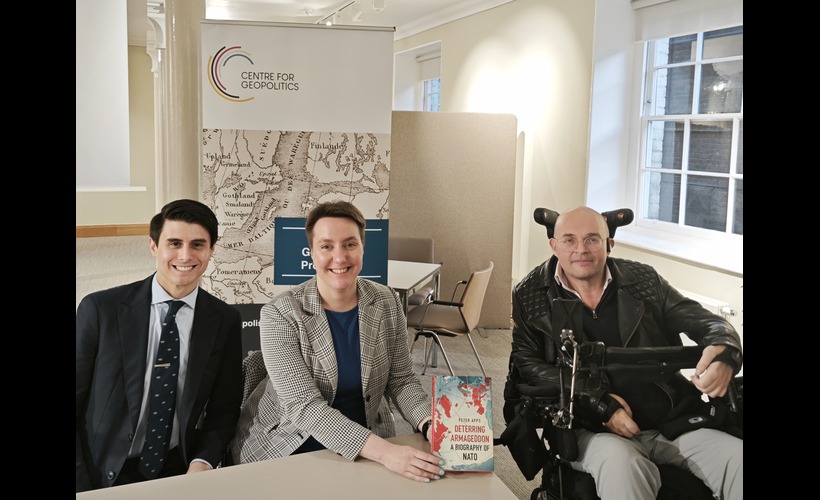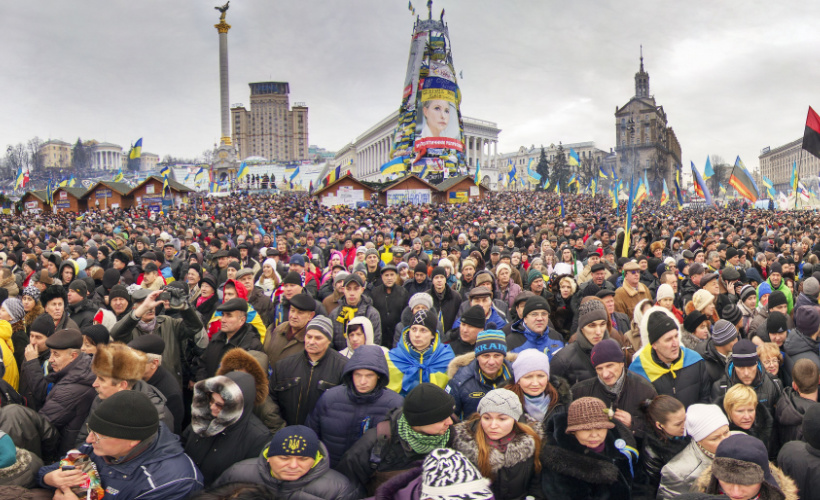The end of the Great War brought about a new era for Europe in many respects, not least for Lithuania, Latvia and Estonia which emerged independent for the very first time. The new states were small and thus found their initial assertions of sovereignty influenced by the interests and influences of great powers. The arena of geopolitical power was a rapidly shifting environment at this time, something the Centre for Geopolitics’ 20 January seminar, ‘External influences in the Baltic state-building after the Great War’, sought to explore. Donatas Kupčiūnas, the centre’s research associate on the Baltic programme, was joined by historians from all three of the Baltic states, who presented three very different ways in which the region was influenced by outside agents.
The first speaker, Dr Tomas Balkelis, of the Lithuanian Institute of History, started our seminar with an example of foreign intervention which never came to fruition. His talk described how Lithuania was initially conceived as a constitutional monarchy which would have been ruled by Prince Wilhelm of Urach, Count of Württemberg. Despite being given the Lithuanian name Mindaugas II for the duration of his reign between June and November 1918, the prince was symbolic of an alignment towards Germany. As Dr Balkelis explained, Germany still dominated the Eastern front at this late stage of the war, so the Taryba, Lithuania’s ruling council, looked to the Reich to support their fledgling nation. The initial constitution instituted friendship with Germany and an alignment in major foreign policy decisions. The Taryba even considered crowning someone close to the Prussian and Saxon elite. One rejected candidate was the Kaiser’s son, Prince Joachim, but the Taryba believed his candidacy would impinge on Lithuania’s independence too much. The pro-German constitution of Lithuania could almost be interpreted as what Lithuania might have been had Germany not been defeated. This was a constitution supported by the landed elite which may not have countenanced so much land reform as actually occurred in the Republic of Lithuania. It was also a less democratic constitution which excluded women from the vote as well as any mention of national minorities. The king would have chosen half of Lithuania’s upper house. However, Dr Balkelis argued that there was little appetite for such a constitution, regardless of the outcome of the Great War. The left wing, civil society and returning nationalist thinkers did not accept it nor its German figurehead.
Prof. Ēriks Jēkabsons presented the second talk of the evening, a look into American aid in the early years of Latvian independence. The USA did not recognise Latvia’s statehood, declared in 1918, until 1922. Prof. Jēkabsons explained that the American attitude to Russia was key to this position, as Washington supposed that a united White Russia was more equipped to deal with the Bolshevik threat. The division of America during the American Civil War, only half a century prior, had also moulded views against the break-up of large polities. This initial reluctance to acknowledge Latvia’s independence did not prevent extensive provision of American aid to Latvia between 1918 and 1922. Latvia was in need of relief. The German/ Russian frontline ran through Latvian territory and a total of fourteen armies operated there during the Great War and the Russian Civil War. This included enemy Latvian forces. A rebuilding of health infrastructure through clinics and hospitals was needed when typhus broke out across the country. Several institutions, both governmental and non-governmental, travelled to Latvia to provide aid, primarily through food donations and medical help. Herbert Hoover, the head of the American Relief Administration, surmised that Bolshevik expansion was impossible to stop, but that Americans could prevent famine and poverty. The American effort to provide aid, Jēkabsons, pointed out, gave the US an enduring positive reputation in Latvia, despite the late acceptance of independence.
Finally, Dr Mart Kuldkepp gave a fascinating talk on the Baltic States and the League of Nations. He put forward the crucial problem of small nations operating in post-war Europe, namely, how does one ensure security? Dr Kuldkepp offered three historical solutions: alliance with larger powers, federation between smaller states, and neutrality. All three had significant drawbacks. Allying with a larger power meant being dependent on them and no Baltic power was keen on being dependent on the Soviet Union or Germany. The federal idea also collapsed as the Baltic States found it difficult to coordinate their interests. Estonia planned a Baltic League but only achieved limited ties with Latvia. The third option seemed the most desirable. It had previously suited Denmark, Sweden and, famously, Switzerland. However, the example of neutral Belgium’s invasion by Germany in 1914 proved a cautionary tale. The Baltic wish for neutrality seemed to preclude access to the League of Nations which challenged traditional foreign policy. As Dr Kuldkepp explained, the League aimed to offer security through collective decision-making. This meant that the League would be united in decisions to impose sanctions if a member was threatened. This did not suit the interests of a neutral. Yet Estonia, Latvia and Lithuania all became members within two years of the League’s foundation in 1920, joining the Nordic countries and even Switzerland. The decision, Dr Kuldkepp maintained, was a result of a major failing of the League before it had even been set up, which was the watering down of its ability to enforce collective action. The failure was shown in 1938 when the Baltic and the Nordic countries declared that they saw the League’s sanctions as unbinding.
The presentations provided by the three panelists illustrated that the independence of the Baltic States was not independent of the strategic interests of outside agents. The three states were born at a time of large-scale geopolitical restructuring where it was not clear who, and indeed where, would hold the most sway in Europe’s East. Alongside domestic forces of independence, state, non-governmental and supra-national bodies from abroad helped to dictate the character, direction and survival of Estonia, Latvia and Lithuania.






